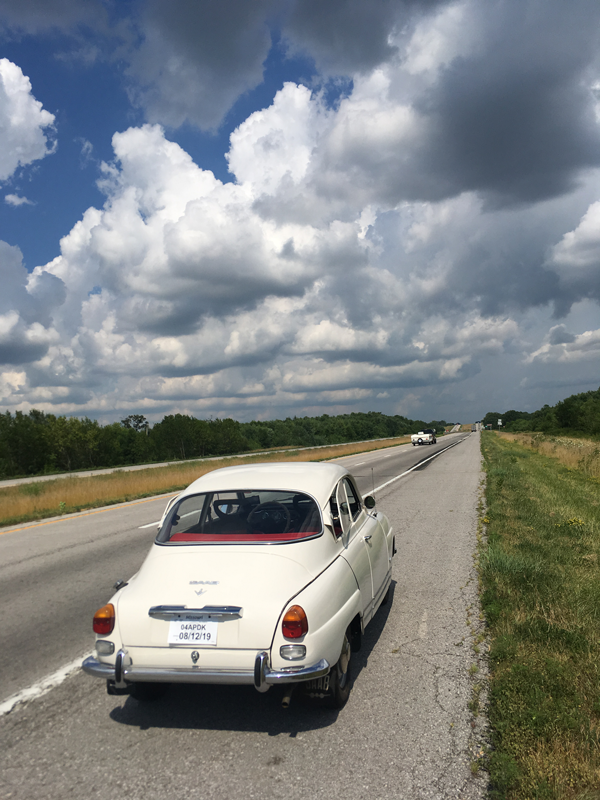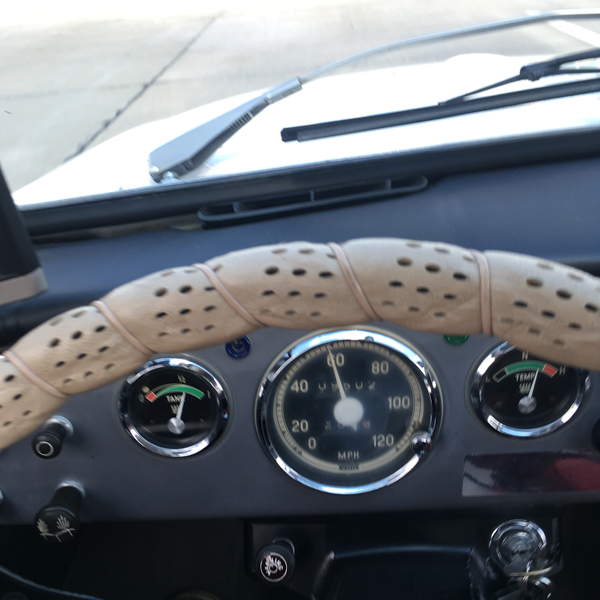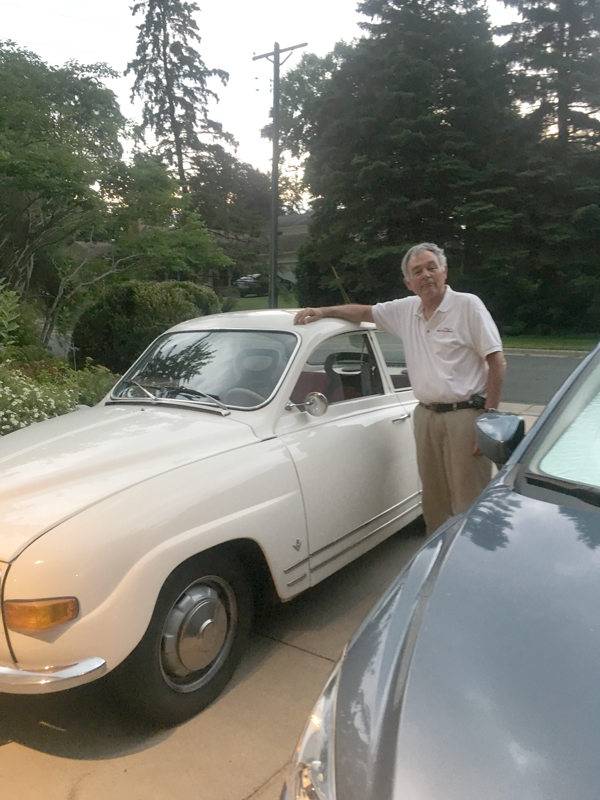-Andy Lindberg –
July 14, Sunday morning. On Delta flight 1318 to Kansas City. Why am I doing this? I don’t really need another old car. And is this car in good enough condition to make it 500+ miles back to St. Paul? I don’t know and I’m starting to worry about it. The pictures on eBay were nice but you know what that means. Nothing. Or in the case of the Saab 96 I’m going to get: “ingenting,” the Svenska word for nada.
What is a Saab 96? It’s the last variant of the “original “ body shapes that started after WWII when the Swedish airplane company decided they needed to diversify. Their cars’ side view closely matched that of an airplane wing. They also featured front-wheel drive and a two-cylinder two-stroke engine. Not bad for an entry-level utility vehicle. They didn’t want to compete with the posh up-market (and conservative as meatballs) Volvos. It worked and Saab often outsold Volvo in their home market.
Like another bottom-shelf front-wheel-drive car, the British Mini, the Saab was also an excellent rally car. Erik ‘On-The-Roof’ Carlsson was a national hero for his exploits. (You anglophiles may remember he married Stirling Moss’ rally champion sister, Pat.) He also made Saab the overall Monte Carlo Rally victor in ’62 and ’63.
By the ’60s the two-stroke engine was showing its weaknesses and the company was replacing too many of the oil-spewing devices. In 1966, the Ford Taunus-derived V4 began making its appearance in the Saab 96. In a few years the stroker was gone and all 96s were V4s. After a 20-year run, the last 96 was built in 1979.

July 14, Sunday evening. Ottumwa, Iowa. I didn’t want to take I-35 up to St. Paul because I didn’t know whether the 96 was up to a 75 mph 500-mile sprint. Especially in 90+ degree temps. I’ve owned enough Britmobiles to worry big-time about overheating. Plus the 96 is “only” a 4-speed, and there’s no tach so I had no idea how rapidly its extremely smooth V4 was running. (Later research revealed it goes 17+ mph per 1,000 rpms in 4th gear.)

Instead I took US 36 to 63. Both are pseudo freeways. Usually four-lane divided highways except when they’re not. Did I mention it was hot? The temp gauge never got into the red “H” zone but it was leaning to the right. More so going uphill and when I exceeded 60 mph. The hills were not that steep but they were long. Going downhill was fun. If I took my foot off the gas pedal, the Saab would go into “freewheel” mode.
Even at 90 degrees, the interior of the Saab wasn’t that bad. No A/C but also no transmission tunnel to bake the interior. There was a brief shower so I stopped and rolled up the two front windows. That got a little stuffy. So another stop to get them back down. It’s interesting that the Saab’s windows don’t go straight up and down. They pivot from the front.
(While freewheeling, the engine is disconnected from the differential. It’s the same thing as depressing the clutch pedal on a normal manual tranny car. It was disconcerting at first since I assumed we had popped out of gear. I’d push in the clutch pedal and try to force the 4-on-the-tree lever even further into the gear it was already in.)
My goal was to get into Iowa before I stopped for the night. Across the Iowa border Ottumwa was the first town that seemed likely to have restaurant and motel. They do but it took many wrong turns to find them. I read the Saab owners’ manual at dinner.

July 15, Mendota Heights, Minnesota. Home after a mega-detour marathon. Do not take Hwy. 63 through Waterloo, Iowa. And after a pleasant root beer float in Spring Valley, Minnesota, 63 had a “no thru traffic” hissy fit. After a 60 mile unguided tour of boring straight cornfield rows, the Saab found a north-going county highway that eventually took us to Rochester and Hwy 52 to home.
